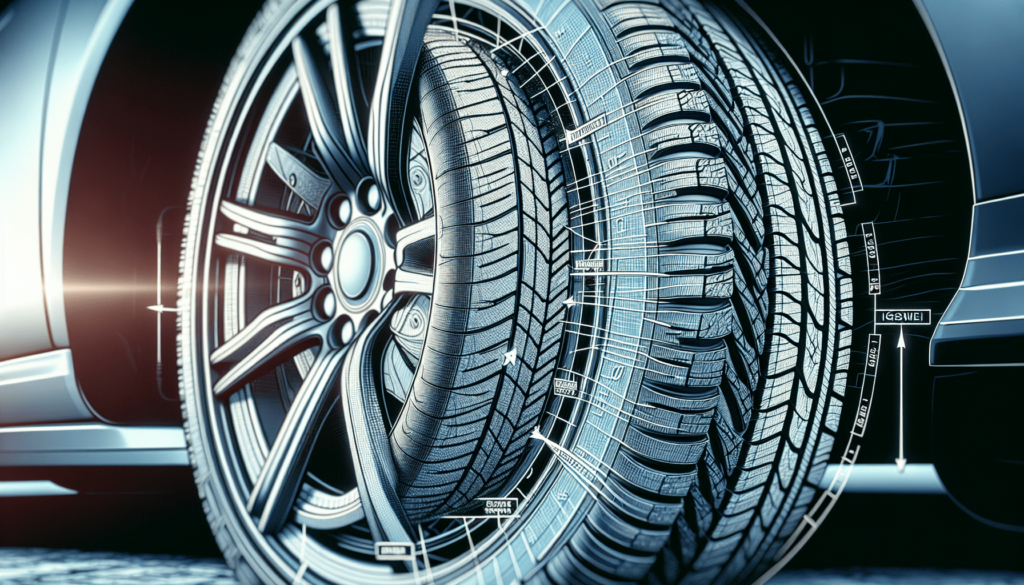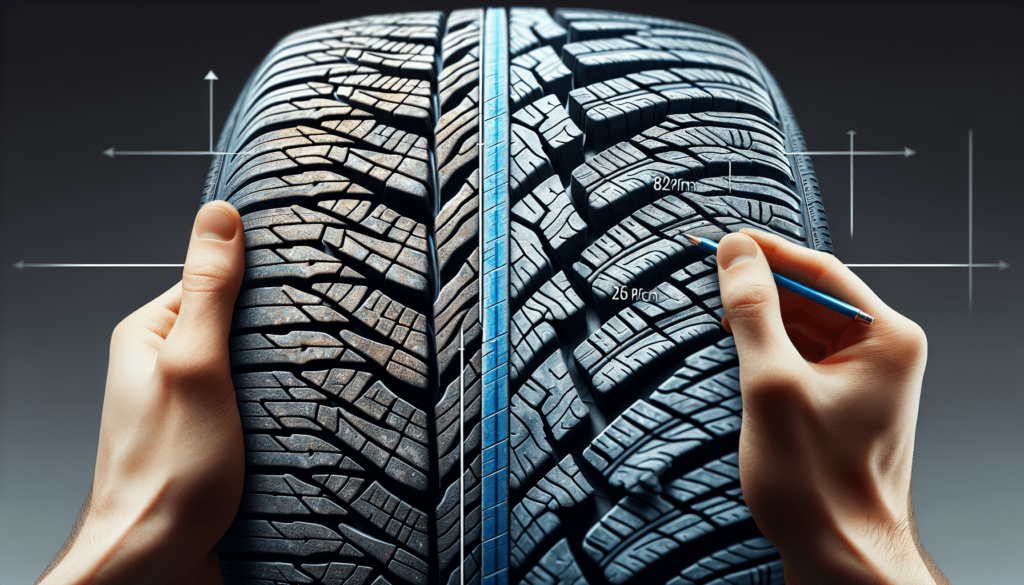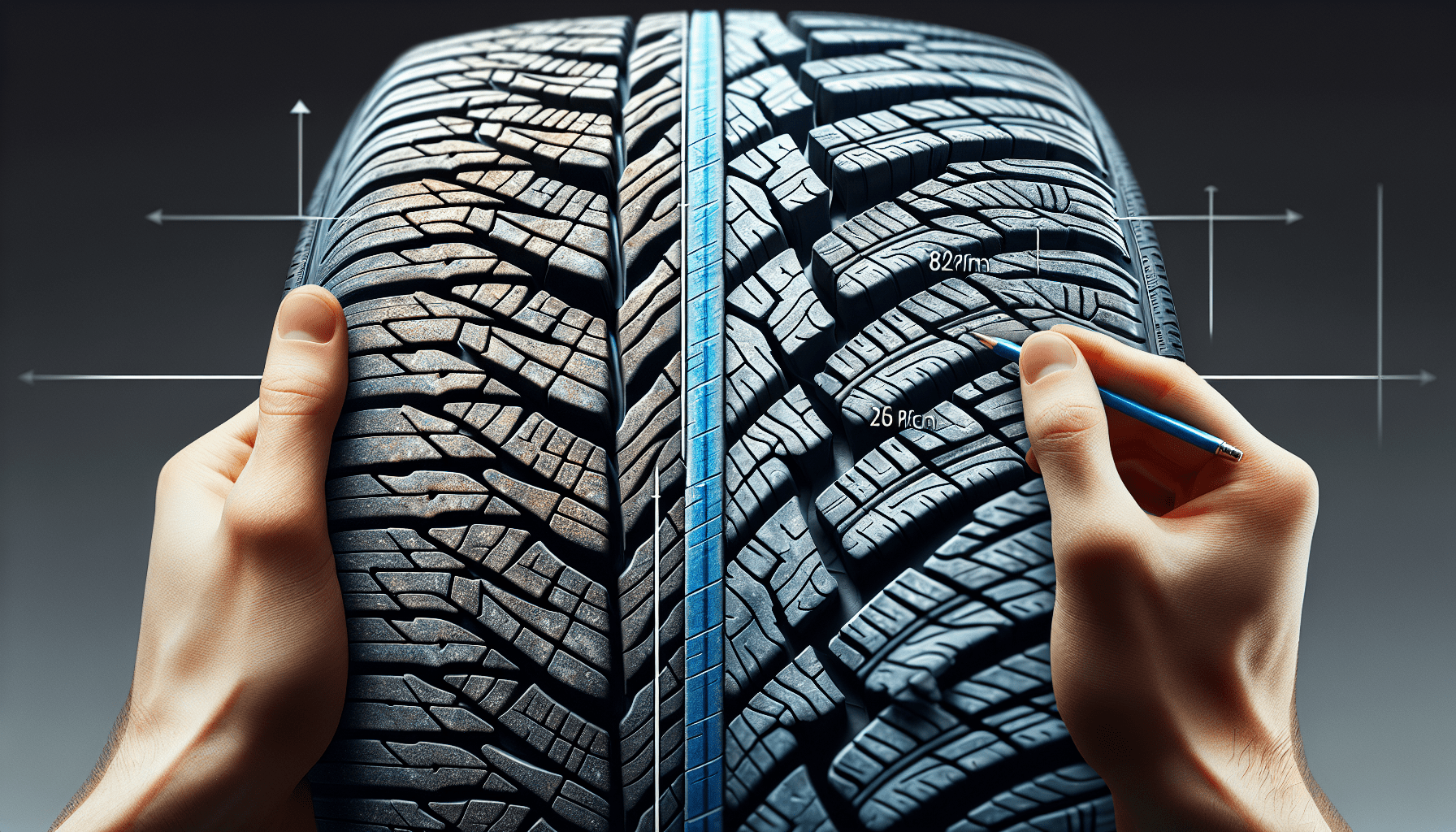You know the feeling of driving on a freshly paved road, with your car effortlessly gliding along? Well, regular wheel alignment can help maintain that smooth and enjoyable driving experience. By ensuring that your wheels are properly aligned, you can extend the life of your tires, improve fuel efficiency, and enhance overall vehicle safety. So, let’s take a closer look at the potential benefits of regular wheel alignment and why it’s a worthwhile investment for any vehicle owner.

Improved Safety
Reduced risk of accidents
One of the key benefits of regular wheel alignment is the reduced risk of accidents. When your wheels are properly aligned, your vehicle will have better stability and control on the road. This means you’ll be able to maneuver your vehicle more effectively and respond quickly to unexpected situations. Proper wheel alignment also ensures that your tires make proper contact with the road, reducing the risk of sliding or skidding. By minimizing the chance of accidents, regular wheel alignment helps to keep you and your passengers safe.
Better handling and control
Proper wheel alignment also improves the overall handling and control of your vehicle. When your wheels are aligned, it means that they are all pointing in the same direction and working together. This results in smoother steering response and a more predictable driving experience. You’ll notice that your vehicle feels more stable and easier to control, especially when making turns or navigating tight corners. Improved handling and control not only enhances your driving experience but also increases your confidence on the road.
Prevention of premature tire wear
Another significant advantage of regular wheel alignment is the prevention of premature tire wear. When your wheels are not properly aligned, certain parts of your tires can experience excessive wear and tear, causing them to deteriorate faster. This uneven wear can lead to a decrease in tire performance and lifespan. However, with regular wheel alignment, all four tires wear evenly. This extends the life of your tires and saves you money on frequent replacements. Additionally, well-aligned wheels reduce the likelihood of a blowout or puncture, further improving your safety on the road.
Extended Tire Life
Even wear on all tires
Regular wheel alignment ensures that all four tires wear evenly. When your wheels are properly aligned, each tire bears an equal amount of the vehicle’s weight and rolls straight. This means that the tread on all tires will be worn down at the same rate, preventing any premature wear on specific tires. Even tire wear not only extends the overall life of your tires but also provides consistent and reliable performance throughout their lifespan.
Minimized tire wear and tear
Improper wheel alignment can result in excessive tire wear and tear. When your wheels are misaligned, certain areas of your tires bear more weight and experience more friction, causing them to wear down faster. Regular wheel alignment helps to minimize this wear and tear by ensuring that all four tires are correctly aligned and in contact with the road at the optimal angle. By reducing unnecessary wear, you’ll be able to maximize the lifespan of your tires, saving you money on replacements in the long run.
Cost savings on tire replacements
By extending the life of your tires through regular wheel alignment, you can enjoy significant cost savings on tire replacements. Tires are a significant investment, and having to replace them frequently can add up to substantial expenses. However, when your wheels are properly aligned, your tires will wear evenly, allowing you to get the most out of their lifespan. This not only saves you money but also reduces waste by decreasing the number of tires that end up in landfills. Regular wheel alignment is a wise investment that pays off in both financial and environmental terms.
Improved Fuel Efficiency
Reduced rolling resistance
Proper wheel alignment contributes to improved fuel efficiency by reducing rolling resistance. When your wheels are aligned, all tires roll smoothly and in the same direction. This reduces the amount of friction between the tires and the road surface, allowing your vehicle to move forward with less effort. As a result, your engine doesn’t have to work as hard to propel the vehicle, leading to lower fuel consumption. By regularly aligning your wheels, you can optimize your vehicle’s fuel efficiency and enjoy savings at the pump.
Optimized vehicle performance
Regular wheel alignment not only improves fuel efficiency but also optimizes your vehicle’s overall performance. When your wheels are properly aligned, your vehicle operates more smoothly and efficiently. It glides along the road with decreased resistance, providing better acceleration and a smoother ride. Proper alignment also minimizes vibration and noise, creating a more comfortable driving experience. By aligning your wheels at regular intervals, you can ensure that your vehicle performs at its best, delivering the power and efficiency you expect.
Savings on fuel expenses
One of the most tangible benefits of improved fuel efficiency resulting from regular wheel alignment is the savings on fuel expenses. With the rising costs of fuel, saving as much as possible at the pump has become increasingly important for many drivers. When your wheels are properly aligned, your vehicle requires less energy to move, leading to reduced fuel consumption. Over time, these savings can add up significantly, putting more money back in your pocket. Regular wheel alignment not only benefits your vehicle’s performance but also helps you save on fuel expenses.
Enhanced Vehicle Performance
Improved steering response
Proper wheel alignment enhances your vehicle’s steering response, making it more responsive and precise. When your wheels are aligned, your vehicle will respond to your steering inputs more accurately, allowing you to navigate curves and corners with confidence. You’ll notice a significant improvement in how your vehicle handles and turns, making for a more enjoyable and controlled driving experience. Improved steering response not only enhances performance but also increases your overall safety on the road.
Increased stability and smoothness
Regular wheel alignment promotes increased stability and smoothness while driving. When your wheels are properly aligned, your vehicle maintains a stable and balanced position on the road. This stability reduces the likelihood of swaying or drifting while driving, providing you with a more secure and comfortable ride. Additionally, proper alignment eliminates any vibrations or shaking you may feel while driving, resulting in a smoother and more enjoyable driving experience for both you and your passengers.
Maximized braking effectiveness
Proper wheel alignment plays a crucial role in maximizing your vehicle’s braking effectiveness. When your wheels are aligned, your vehicle’s tires make optimal contact with the road surface, allowing for more precise and efficient braking. This means that your brakes can perform at their best, bringing your vehicle to a stop quickly and effectively when necessary. Proper alignment ensures that your vehicle’s braking system operates optimally, enhancing your safety on the road and the safety of those around you.

Reduced Maintenance Costs
Prevention of damage to suspension components
Regular wheel alignment helps prevent damage to your vehicle’s suspension components. When your wheels are misaligned, they put excessive stress on the suspension system, including the shocks, struts, and springs. Over time, this stress can lead to wear and tear on these components, resulting in expensive repairs or replacements. By keeping your wheels properly aligned, you reduce the strain on the suspension system, prolonging its lifespan and avoiding costly maintenance or repairs.
Avoidance of costly repairs
Proper wheel alignment can help you avoid costly repairs to other parts of your vehicle. When your wheels are misaligned, it affects not only the alignment itself but also puts additional strain on other components. Misaligned wheels can lead to uneven tire wear, which can cause issues with the suspension, steering system, and even the drivetrain. By regularly aligning your wheels, you minimize the risk of these problems arising, ultimately saving you money on potentially expensive repairs.
Longer lifespan for other mechanical parts
Regular wheel alignment contributes to a longer lifespan for other mechanical parts in your vehicle. Misaligned wheels can cause unnecessary stress and strain on various components, including the suspension, steering, and drivetrain. Over time, this can lead to premature wear and tear, decreasing the lifespan of these parts. However, with regular alignment, you alleviate this strain, allowing these parts to perform optimally and last longer. By investing in regular wheel alignment, you can extend the overall lifespan of your vehicle and avoid the need for premature replacements.
Comfortable Driving Experience
Reduced vibration and noise
Regular wheel alignment ensures a more comfortable driving experience by minimizing vibration and noise. When your wheels are properly aligned, they roll smoothly and evenly, reducing vibrations that can be felt throughout the vehicle. This leads to a quieter and more refined ride, allowing you to enjoy conversations or music without excessive background noise. Additionally, reduced vibrations contribute to a more comfortable driving experience, minimizing the risk of driver and passenger fatigue during long journeys.
Enhanced ride comfort
Proper wheel alignment greatly enhances the overall ride comfort of your vehicle. When your wheels are aligned, your vehicle moves in a balanced and controlled manner, absorbing bumps and imperfections in the road more effectively. This results in a smoother ride, providing increased comfort for both the driver and passengers. Whether you’re commuting to work or embarking on a road trip, regular wheel alignment makes the journey more enjoyable by reducing the jarring and jolting sensations often associated with uneven roads.
Minimized driver and passenger fatigue
Regular wheel alignment helps to minimize driver and passenger fatigue during long drives. When your wheels are aligned, your vehicle maintains stability and balance, reducing the physical strain on both the driver and passengers. With a smoother and more comfortable ride, there is less muscle tension and fatigue, allowing you to arrive at your destination feeling fresher and more energized. By prioritizing regular wheel alignment, you can make your driving experience more enjoyable and reduce the impact of long journeys on your well-being.

Improved Alignment Precision
Alignment measurements for precise adjustments
Regular wheel alignment involves alignment measurements that allow for precise adjustments. Highly trained technicians use advanced alignment equipment to measure various angles, including camber, caster, and toe. These measurements provide accurate information about the current alignment status of your vehicle’s wheels. Based on these measurements, precise adjustments can then be made to ensure that your wheels are aligned according to the manufacturer’s specifications. By focusing on alignment precision, you can be confident that your vehicle’s wheels are aligned optimally for performance and safety.
Proper alignment angles for optimal performance
Proper wheel alignment ensures that your vehicle’s alignment angles are set to the optimal positions for performance. The alignment angles, including camber, caster, and toe, directly affect how your vehicle handles and performs on the road. When these angles are correctly aligned, your vehicle will have improved stability, steering response, and overall handling. Proper alignment angles also reduce tire wear and extend their lifespan. Regular wheel alignment guarantees that these angles are maintained within the recommended tolerances, allowing your vehicle to perform at its best.
Precision alignment equipment
Regular wheel alignment is carried out using precision alignment equipment. These advanced tools and technologies enable technicians to measure and adjust your vehicle’s wheel alignment with utmost accuracy. Laser-guided systems and computerized sensors ensure that the alignment measurements are highly precise. Technicians can then use this data to make the necessary adjustments to your vehicle’s suspension components, ensuring that your wheels are properly aligned. The use of precision alignment equipment guarantees a reliable and thorough alignment process, giving you peace of mind that your vehicle is in the best alignment condition possible.
Prevention of Drifting or Pulling
Prevention of vehicle veering to one side
Regular wheel alignment prevents your vehicle from veering to one side while driving. When your wheels are misaligned, they can cause your vehicle to drift or pull in a particular direction. This can be not only inconvenient but also dangerous, as it compromises your ability to drive straight and maintain control of your vehicle. By maintaining proper wheel alignment, you eliminate this drifting or pulling effect, ensuring that your vehicle stays in its intended lane and allowing for a safer and more comfortable driving experience.
Elimination of steering wheel pulling
Proper wheel alignment also eliminates the steering wheel pulling effect that can occur when your wheels are misaligned. When your wheels are not aligned, they exert different levels of force on the steering system, causing your steering wheel to pull to one side. This can be frustrating and tiring to constantly correct your steering, especially during long drives. Regular wheel alignment ensures that your wheels are aligned properly, avoiding any pulling sensations and allowing for a smoother and more effortless steering experience.
Enhanced vehicle stability and control
Regular wheel alignment significantly enhances your vehicle’s stability and control. When your wheels are properly aligned, your vehicle moves in a balanced and controlled manner, providing you with a more stable driving experience. Proper alignment reduces the risk of fishtailing, swaying, or veering off course, allowing for improved vehicle control. This enhanced stability also boosts your confidence behind the wheel, making driving safer and more enjoyable. By prioritizing regular wheel alignment, you can experience the benefits of increased vehicle stability and control in various driving conditions.

Better Traction and Handling
Improved tire grip on the road
Regular wheel alignment improves the overall grip of your tires on the road surface. When your wheels are properly aligned, each tire makes optimal contact with the road, maximizing traction. This is especially important when driving in wet or slippery conditions, as proper alignment ensures that your tires maintain a strong grip, reducing the risk of skidding or hydroplaning. Improved tire grip enhances your vehicle’s overall handling and allows you to navigate through various road surfaces with more confidence and control.
Enhanced maneuverability
Proper wheel alignment enhances the maneuverability of your vehicle. When your wheels are aligned, your vehicle responds more effectively to your steering inputs, allowing for precise and controlled maneuvers. Whether you need to change lanes quickly or navigate tight corners, proper alignment ensures that your vehicle responds promptly and moves in the desired direction. This enhanced maneuverability enables you to drive with confidence and adapt to changing road conditions, no matter where your journey takes you.
Reduced risk of skidding
Regular wheel alignment reduces the risk of skidding, particularly in challenging driving conditions. When your wheels are properly aligned, your tires maintain optimal contact with the road, improving traction and reducing the likelihood of skidding. Proper alignment helps to evenly distribute the braking and cornering forces, ensuring that all tires work together to maintain stability. This becomes especially important when encountering sudden stops or needing to make emergency maneuvers. By prioritizing wheel alignment, you enhance your vehicle’s safety and minimize the risk of skidding, providing you with peace of mind on the road.
Enhanced Vehicle Resale Value
Proper alignment attracts more buyers
Regular wheel alignment contributes to an increased resale value for your vehicle. When potential buyers are looking at used vehicles, one of the factors they consider is the overall condition and maintenance history of the vehicle. Having a record of regular wheel alignment indicates that you have taken good care of your vehicle and that it is in optimal condition. This attracts more buyers and can potentially lead to a higher selling price. By prioritizing regular wheel alignment, you not only enjoy the immediate benefits but also invest in the long-term value of your vehicle.
Positive impact on the overall condition of the vehicle
Regular wheel alignment has a positive impact on the overall condition of your vehicle. When your wheels are aligned properly, it reduces stress on various components, including the suspension, steering, and tires. With reduced strain on these components, they are less likely to experience excessive wear and tear, resulting in a longer lifespan. By maintaining proper alignment, you ensure that your vehicle stays in optimal condition, both in terms of performance and appearance. This overall well-maintained condition adds value to your vehicle and increases its resale potential.
Higher resale price potential
One of the notable advantages of regular wheel alignment is the potential for a higher resale price. When your wheels are aligned, your vehicle operates more efficiently and delivers better overall performance. Potential buyers are willing to pay a premium for a vehicle that has been well-maintained and performs at its best. By regularly aligning your wheels, you optimize your vehicle’s performance and increase its resale price potential. In addition to the financial benefits, knowing that your vehicle has a higher resale value can provide a sense of satisfaction and peace of mind for the future.


